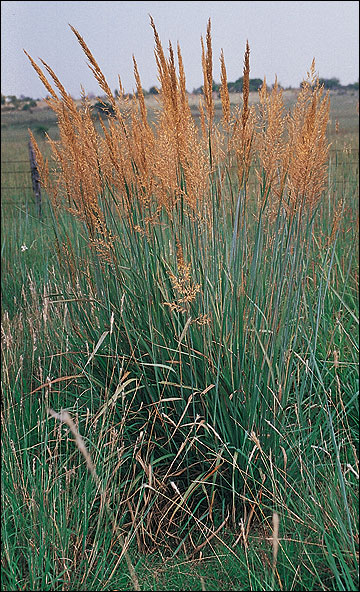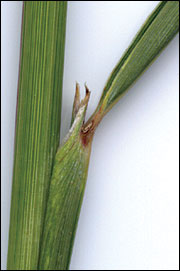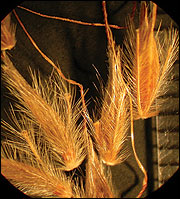Indian grass
- Sorghastrum nutans
Grass

Indian grass is readily identified by its tall (more than 5 feet) stem and golden-plumed seed head.
Courtesy of The Samuel Roberts Noble Foundation, Ardmore, Oklahoma
Description
This tall, warm-season native averages 4 to 6 feet in height at maturity. Stems are stiff, and leaves are long and narrow. A characteristic of the plant is the "gunsight," or notched ligule suggesting the rear sight of a rifle. Another easy characteristic to remember is that the leaf narrows so severely at the ligule that it almost appears to be pointed on each end. At maturity, the seed head looks like a plume, with seeds golden brown and hairy.
Use by bobwhites
Quail readily use Indian grass for a variety of needs. Its clumpy nature makes it good for feeding and brood rearing. It grows tall enough to offer summer and winter thermal cover. Coveys may roost in Indian grass when it occurs in mixed or open stands. Some Indian grass varieties have a tendency to outcompete other grasses and reduce plant diversity, particularly during the first few years after planting. Indian grass dominance normally decreases over time to a more subordinate role of codominance with species like big bluestem. Where Indian grass is too dense or tall, a late-summer prescribed fire can set it back the following year. Because it is a nutritious and palatable forage, prescribed grazing can be applied for the same result.








